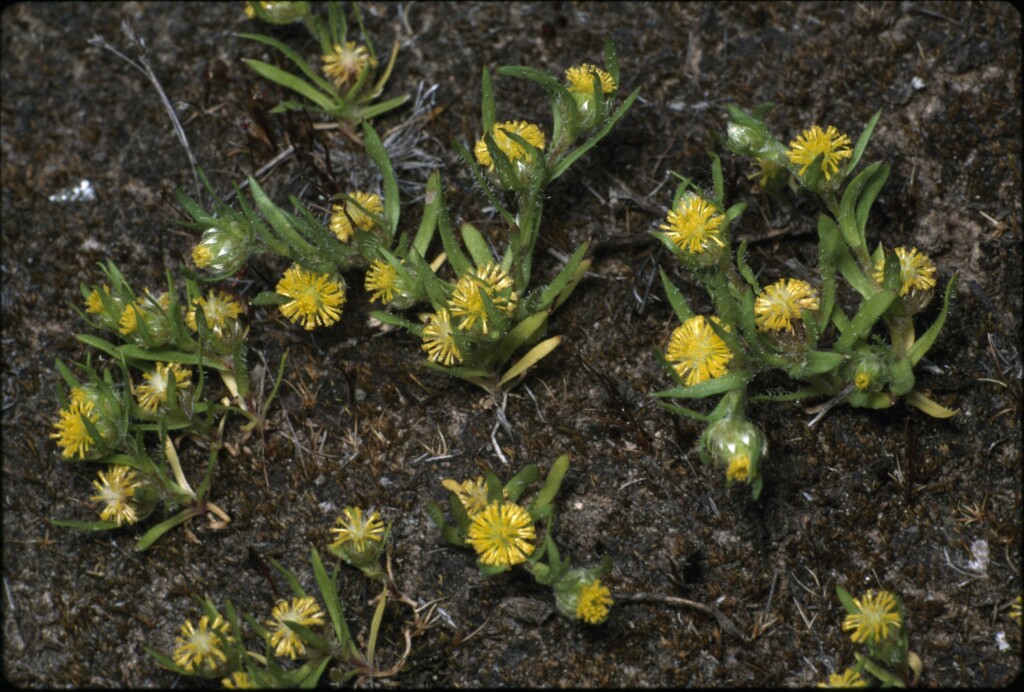Triptilodiscus pygmaeus
Turcz.Ascending to erect annual, c. 2–20 cm high. Leaves linear to lanceolate or oblanceolate, 0.5–3 cm long, 1–4.5 mm wide, sparsely pilose. Capitula hemispherical to subglobular, the subtending leaves c. twice the length of the capitulum. Involucral bracts c. 3–5 mm long; florets exceeding the bracts by c. 1–2 mm and the yellow corolla-tubes manifestly curved outwards; female florets c. 6–15, bisexual florets, c. 30–110. Cypselas oblong-ellipsoid, 1.5–1.8 mm long, blackish; pappus of bisexual florets c. 2–3 mm long. Flowers Sep.–Dec.
LoM, MuM, Wim, GleP, VVP, VRiv, MSB, RobP, MuF, GipP, OtP, WaP, Gold, CVU, GGr, DunT, NIS, EGL, EGU, HSF, HNF, VAlp. Also WA, SA, Qld, NSW, Tas. Widespread in open situations through a wide range of soil and vegetation types in lower-rainfall areas, e.g. clayey soil on river floodplains in north-western Victoria, shallow rocky soils of the lower ranges, and on mossy ledges of rock outcrops.
Short, P.S. (1999). Triptilodiscus. In: Walsh, N.G.; Entwisle, T.J., Flora of Victoria Vol. 4, Cornaceae to Asteraceae, pp. 768–768. Inkata Press, Melbourne.
 Spinning
Spinning


